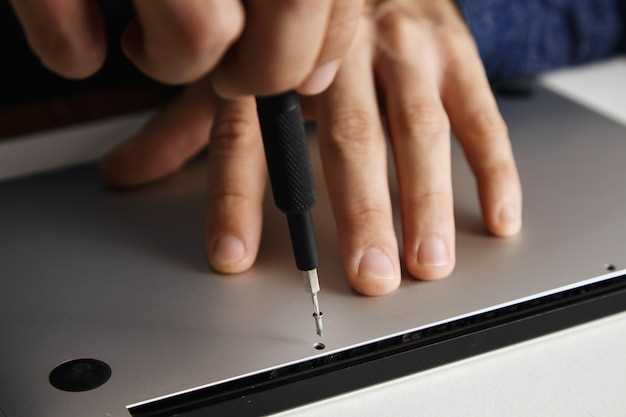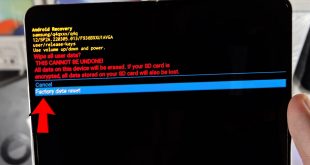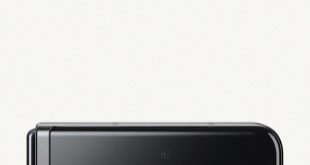
The intricate machinery within our digital companions requires occasional maintenance to ensure optimal functionality. One crucial aspect of this upkeep involves releasing the digital clutter that can accumulate over time, weighing down the system and hindering its performance. This is where the concept of wiping the cache partition comes into play.
The cache partition serves as a temporary storage space for frequently accessed files, allowing for quicker access to them. However, over time, this cache can become cluttered with obsolete data, slowing down the device’s response times and potentially introducing anomalies. By periodically clearing this partition, you can help revitalize your device, allowing it to operate with improved efficiency and speed.
Steps to Wipe Cache Partition
Table of Contents
This procedure removes temporary files stored in the cache partition that may cause performance issues or glitches. Follow these steps to perform a cache partition wipe:
- Power Off: Turn off your device completely.
- Combination Key: Press and hold the Volume Up and Power buttons simultaneously.
- Recovery Mode: When the Samsung logo appears on the screen, release the Power button, but continue holding the Volume Up button until you enter the Recovery Mode.
- Navigate: Use the Volume Keys to navigate the menu and select “Wipe Cache Partition.”
- Confirm: Press the Power button to confirm your selection.
- Reboot: Once the process is complete, select “Reboot System Now.”
- Restart: Your device will restart, and all temporary files stored in the cache partition will be deleted.
Benefits of Wiping Cache Partition
Regularly clearing your device’s cache partition can enhance its performance and stability in several ways. It can:
Enhance System Performance: Removes temporary files and redundant data, freeing up memory and optimizing system processes. This improves overall responsiveness and efficiency.
Resolve System Glitches: Deletes corrupted or outdated cache files that may cause erratic behavior or system crashes. Clearing the cache can often resolve minor issues and restore normalcy.
Free Up Storage Space: Cache files can accumulate over time, consuming valuable storage capacity. Removing them releases space for essential apps, media, and files.
Improve Battery Life: A cluttered cache can strain the device’s processor and battery. Clearing it reduces unnecessary background activity, potentially extending battery life.
Prepare for Updates: Wiping the cache partition before installing software updates can ensure a smoother upgrade process by removing potential conflicts with residual cache files.
When to Wipe Cache Partition
It’s generally advisable to wipe the cache partition when:
| Scenario | Recommended Action |
|---|---|
|
Device performance has slowed down |
Wipe the cache partition to remove temporary files and improve device speed. |
|
Experiencing app crashes or malfunctions |
A corrupted cache can lead to app issues. Wiping the cache can help resolve these problems. |
|
Device is running out of storage space |
The cache partition can accumulate temporary files that consume storage. Wiping it can free up space. |
|
After a software update |
Software updates can sometimes introduce cache compatibility issues. Wiping the cache can resolve any such issues. |
|
As a regular maintenance task |
Regularly wiping the cache can help keep your device running smoothly and efficiently. |
Risks and Precautions
Performing a cache partition wipe is generally considered a low-risk procedure, but certain precautions should be taken. It’s essential to understand that this process does not erase personal data or installed apps. However, it’s recommended to back up important files beforehand, just in case. Unforeseen circumstances can always occur.
Another potential risk is that the wipe can occasionally fail to resolve the issue it was intended for. In such scenarios, further troubleshooting or even a factory reset may be necessary. To minimize the chances of any complications, it’s crucial to follow the steps outlined carefully and ensure your device is fully charged before proceeding.
Question-Answer
What is a cache partition and why should I wipe it?
The cache partition is a temporary storage area that stores frequently accessed data, such as app data and system files. Wiping the cache partition can help improve performance and resolve some issues, such as app crashes or slowdowns. However, it does not delete any personal data, such as photos, videos, or documents.
How often should I wipe the cache partition?
It is not necessary to wipe the cache partition on a regular basis. However, it is recommended to do so if you encounter any performance issues or app crashes. Wiping the cache partition can also help free up storage space.
Will wiping the cache partition delete my data?
No, wiping the cache partition will not delete any personal data, such as photos, videos, or documents. It only removes temporary files that are stored in the cache partition.
What is the difference between wiping the cache partition and a factory reset?
Wiping the cache partition will delete all temporary files and data from your device, while a factory reset will erase all data, including your personal settings, apps, and files. Wiping the cache partition is a less drastic option than a factory reset and is often used to resolve software issues or improve performance. A factory reset should only be performed if you are experiencing serious problems with your device or if you are preparing to sell or give it away.
 New mods for android everyday
New mods for android everyday



